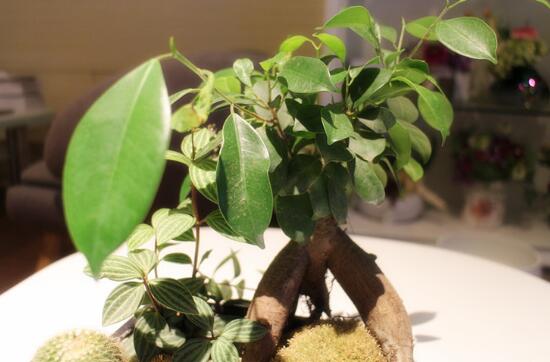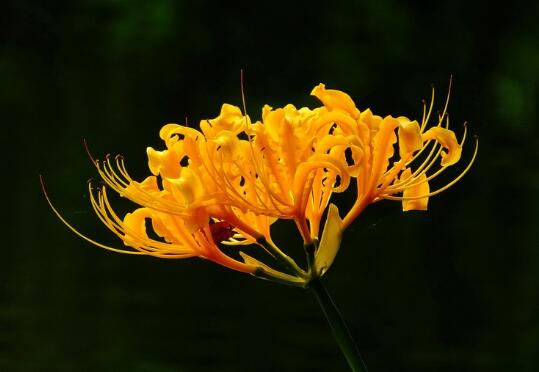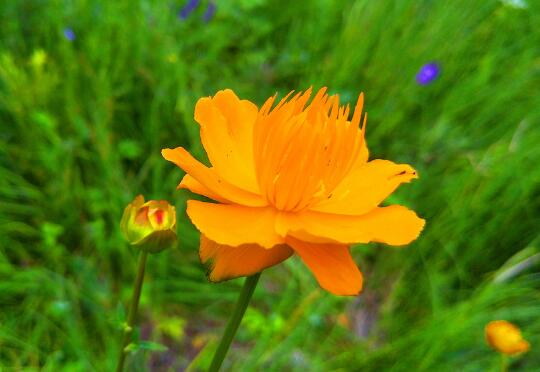What to do with the growth of ginseng banyan insects? disease and pest control of ginseng banyan / shell insect spraying
Ginseng banyan, a beautiful ornamental plant, its roots protruding from the soil surface, shaped like ginseng, looks strange, and is very ornamental when raised indoors. In theory, ginseng banyan has strong adaptability and is not easy to get sick by insects, but sometimes it is also threatened by diseases and insect pests. So what about ginseng banyan worms? Let's go with the editor to take a look at the pest control of ginseng banyan.
1. Ginseng and banyan worms, spray with medicine

As a common indoor potted plant, the culture method of ginseng banyan is very simple, no matter how easy it is to raise plants, it also needs to be raised by people! Once negligent management, or the indoor environment is too poor, ginseng banyan will grow insects and get sick. As for the ginseng banyan bug how to do, in fact, it is very simple, just need everyone to find out which kind of pest is specific, and then solve the problem.
II. Disease and pest control of ginseng banyan
1. Scale insects
In the process of culture, ginseng banyan diseases and insect pests are rare, but when the environment is not ventilated and improperly maintained, there are occasional scale insects. The insect sucks the sap from leaves and twigs with stinging mouthparts. If it is not noticed for a long time, it will also cause ginseng banyan leaves to turn yellow, and even more seriously, ginseng banyan leaves will fall off.
Prevention and control methods: when a small amount of shell insects are found, brush them off manually in time and put them in a ventilated place; when there are too many scale insects, they should be sprayed with medicine, which can be used to kill scale 800-1000 times, and the control effect can be achieved at one time.
2. Brown spot
When it comes to the diseases and insect pests of ginseng banyan, apart from shell insects, the most common disease is brown spot, which mainly harms the leaves of plants and is one of the main causes of blackening of ginseng banyan leaves. Symptoms: at the initial stage, the diseased leaves will appear round or oval spots, showing purplish brown and turn black in the later stage, and even the leaves will wither and yellow and fall off in serious cases.
Prevention and treatment: when the above symptoms are found, remove the diseased leaves in time and burn them centrally to reduce the source of the disease. At the initial stage of the disease, spray 70% manganese zinc wettable powder 400 times, once every 10 days, 3 times 4 times in a row, the prevention and control effect is good.
3. Other diseases
In addition to shell insects and brown spot, ginseng banyan also suffers from other diseases, such as freezing injury when the temperature is low and burns when the light is too strong. The specific symptoms and prevention and treatment methods are as follows:
① freezing injury
Ginseng banyan is not cold-tolerant, and the indoor temperature should be kept above 10 ℃ in winter. Once the temperature is lower than 6 ℃ and the basin soil is moist, it is easy to cause the young leaves of the plant to fall down due to cold, and in serious cases, it will cause tuber rot and it is difficult to restore vitality.
Control methods: in the process of cultivating ginseng banyan, the temperature should be properly adjusted, the temperature should be controlled at 18-33 ℃, the overwintering room temperature should be above 10 ℃, and the basin soil should be slightly dry.
② burns
Ginseng banyan likes the light and avoids strong light. Once it is exposed to the sun for a long time, it is easy to cause leaf burns, causing part of the leaves to lose green and whiten, or the whole leaves to be burned, and the necrotic parts turn brown and black in the later stage.
Prevention and treatment: when the light is too strong, especially in summer, ginseng banyan should be moved to indoor astigmatism for maintenance; in early spring, late autumn and winter, plants can be moved out to bask in the sun from time to time.
Generally speaking, the efficacy of ginseng banyan is good, and it is easy to raise, so it is very suitable for raising indoors. But once it is neglected to manage, it will be targeted by diseases and insects, thus seriously affecting its ornamental. Therefore, for the sake of the health of ginseng banyan, we must raise it carefully. With regard to the prevention and control of diseases and insect pests of ginseng banyan, the editor has introduced this, hoping to give you some help.
What to do when the iron tree grows insects? pest control of the iron tree / 2 insects and 2 diseases are sprayed with medicine.
I believe many flower friends know that the iron tree is poisonous, but even so, some people still keep it at home because the iron tree is really good-looking. However, in the process of breeding, because of negligence, the iron tree will also grow insects and get sick, which will destroy its ornamental. So, what should we do if the iron tree grows worms? The following are four kinds of iron tree pest control, follow the editor to have a look!
1. Iron tree worms, spray with medicine
In the process of breeding iron tree, because of high temperature, dryness, poor ventilation, high air humidity and other factors, the plant will grow insects and get sick. Among them, the main insect pests are shell insects and small gray butterflies, and the main diseases are white spot disease and coal pollution disease. Once the long worm gets sick, it will affect the growth of the iron tree, so as soon as it is found, we should immediately spray to prevent and cure it. Specifically, you can refer to the prevention and control of diseases and insect pests.
II. Disease and insect pest control of iron tree
1. Scale insects
The iron tree has strong adaptability and is rarely affected by diseases and insect pests, but its leaves are also vulnerable to shell insects at high temperature, dryness and poor ventilation. The insect sucks the sap from leaves and twigs with stinging mouthparts, resulting in yellowing of iron tree leaves and death of branches or leaves in severe cases.
Prevention and control methods: when there are few shell insects, you can brush them off with a brush and rinse them with water; when there are many shell insects, spray 50% omethoate emulsion or 50% monocrotophos in time, which has a special effect on shell insects, and the control effect can be achieved in one time.
2. Small gray butterfly
In addition to shell insects, the small gray butterfly is also one of the main pests of the iron tree, which usually occurs from May to November. The insect mainly bites on the tender leaves of the iron tree, causing the plant not to send new leaves all the year round and lose its ornamental value.
Prevention and control method: knowing the habits of the insect, flower friends can watch it every day from June, and spray it in time after finding the small gray butterfly. The medicament can choose 21% to kill EC 1000 times, 20% chrysanthemum EC 800 times 1000 times, 5% Fuling 2500 times 3000 times, and so on.
3. Coal pollution disease
Coal fouling disease, also known as black mold and soot disease, is one of the main diseases of iron tree. The disease is mainly harmful to the leaves, and a black mildew layer is formed on the surface of the affected parts, which looks like a layer of soot. This will seriously hinder the photosynthesis of the iron tree, weaken the growth potential, and in some cases cause the branches and leaves to wither and die.
Prevention and treatment methods: when the above diseases are found, it can be manually scrubbed or sprayed with 80-1000 times liquid of Bishi shark, 70% methyl topiramate and other agents for prevention and treatment.
4. White spot disease
In addition to coal fouling, iron trees are also prone to white spot disease at high temperature and high air humidity. The disease mainly harms the leaves of the iron tree, making the diseased leaves appear irregular disease spots, and the disease spots will gradually expand in the later stage, and purplish red or reddish brown spots can be seen on both sides.
Prevention and control methods: after autumn, the diseased leaves should be completely cut off and burned centrally to reduce the source of the disease. at the initial stage of the disease, carbendazim 50% wettable powder or topazine 70% wettable powder can be mixed with water 1000 times, and the diseased plants can be sprayed in the early morning.
With regard to the prevention and control of iron tree diseases and insect pests, the editor has introduced this. I believe that if you encounter iron tree worms or get sick again, you should know how to do it! Generally speaking, as long as it is maintained according to the breeding method of the iron tree, it will generally not be affected by diseases and insect pests. Of course, if the iron tree worm is sick, don't be afraid, just follow the above method to solve it. Finally, may everyone's iron tree grow beautifully.
What should we do if the bachelors grow worms? pest control of bachelors / 1 pest 2 disease spraying
Single tree, also known as green jade tree, it is a beautiful succulent plant, its straight stem, covered with green, raised indoors is very ornamental. In theory, succulent bachelors are not vulnerable to diseases and insect pests, but in improper conservation, it will also be threatened by diseases and insect pests. So what if the bachelors grow bugs? Next, let's go with the editor to take a look at the pest control of bachelors.
First, bachelors grow worms and determine insect pests
As a common succulent, it is not difficult to cultivate bachelors, but because there are many novices, they will inevitably be improperly maintained, resulting in plant worms getting sick. As for what to do when bachelors grow worms, we should first identify the pests, and then solve the problem of spraying. Specifically, they are all in the pest control of bachelors, so let's move on.
II. Pest control of bachelorous trees
(1) insect pests of bachelorous trees
Because of the strong adaptability, the insect pests of single trees are relatively few, and the insects that want to grow are generally shell insects. The eggs of the insect will be hidden in the bark, and when they grow up, they mainly damage the leaves of the plant, making the buds curly and deformed, which can not grow normally, and if serious, it will also lead to the death of single trees.
Prevention and control methods: when a small amount of shell insects are found, they can be brushed off with a brush and then rinsed with water; then 50% omethoate emulsion or 50% monocrotophos are sprayed, and the control effect can be achieved at one time.
(2) Diseases of bachelors, anthracnose and leaf spot
1. Anthrax
Single trees rarely get sick, but they can also suffer from anthrax when the temperature is high and the air humidity is high. The disease is mainly harmful to the leaves of single trees. at the initial stage of the disease, there are round disease spots on the diseased leaves, then from round reddish brown to gray-white, and then to black-brown and black spots arranged in wheels; in severe cases, the leaves wither and die.
Prevention and control methods: once a single tree suffers from anthracnose, we should immediately cut off the infected branches and leaves and destroy them centrally to avoid re-infection; at the same time, we should spray drugs on sick single trees, such as 700-800 times of carbendazim wettable powder or 500 times of 75% chlorothalonil.
2. Leaf spot
In addition to anthracnose, there is another common disease of bachelors, that is, leaf spot, which often occurs in late autumn and early winter. At the initial stage of the disease, the diseased leaves appear purple-brown spots, if not timely prevention and control, will eventually become gray, endangering the life of single trees.
Control methods: after it is found that bachelors suffer from leaf spot disease, the diseased leaves should not be removed completely in winter to reduce the source of infection in the following year; in addition, the control effect of spraying carbendazim 800 times in time during the onset of the disease is excellent.
With regard to the pest control of single trees, this is the end of the editor's introduction. I believe that if you encounter worms or diseases of single trees again, you should know how to do it! Generally speaking, single trees are not difficult to maintain, as long as everyone can maintain them according to the cultivation methods of single trees. After doing so, the bugs will not come to the door. Finally, may everyone's bachelor trees grow beautifully.
- Prev

Suddenly laugh what to do, suddenly laugh at the control of diseases and insect pests / 3 insect pests and 1 disease
In the process of breeding and laughing suddenly, if there are diseases and insect pests, the harm to the plant is very great, this kind of problem will not only affect its ornamental, but also lead to the phenomenon of death. So what should I do if I suddenly laugh and grow a bug? What should be done to prevent and control the diseases and insect pests of sudden laughter?
- Next

What should we do when the golden lotus grows insects? pest control of the golden lotus / 3 insect pests and 2 diseases
In the process of cultivating golden lotus, the last thing we want to encounter is the problem of diseases and insect pests, which do great harm to the plant, which will not only affect the ornamental nature of the plant, but also lead to the phenomenon of plant death. So what should we do if the golden lotus grows worms? What should be done to prevent and control the diseases of Golden Lotus?
Related
- Fuxing push coffee new agricultural production and marketing class: lack of small-scale processing plants
- Jujube rice field leisure farm deep ploughing Yilan for five years to create a space for organic food and play
- Nongyu Farm-A trial of organic papaya for brave women with advanced technology
- Four points for attention in the prevention and control of diseases and insect pests of edible fungi
- How to add nutrient solution to Edible Fungi
- Is there any good way to control edible fungus mites?
- Open Inoculation Technology of Edible Fungi
- Is there any clever way to use fertilizer for edible fungus in winter?
- What agents are used to kill the pathogens of edible fungi in the mushroom shed?
- Rapid drying of Edible Fungi

